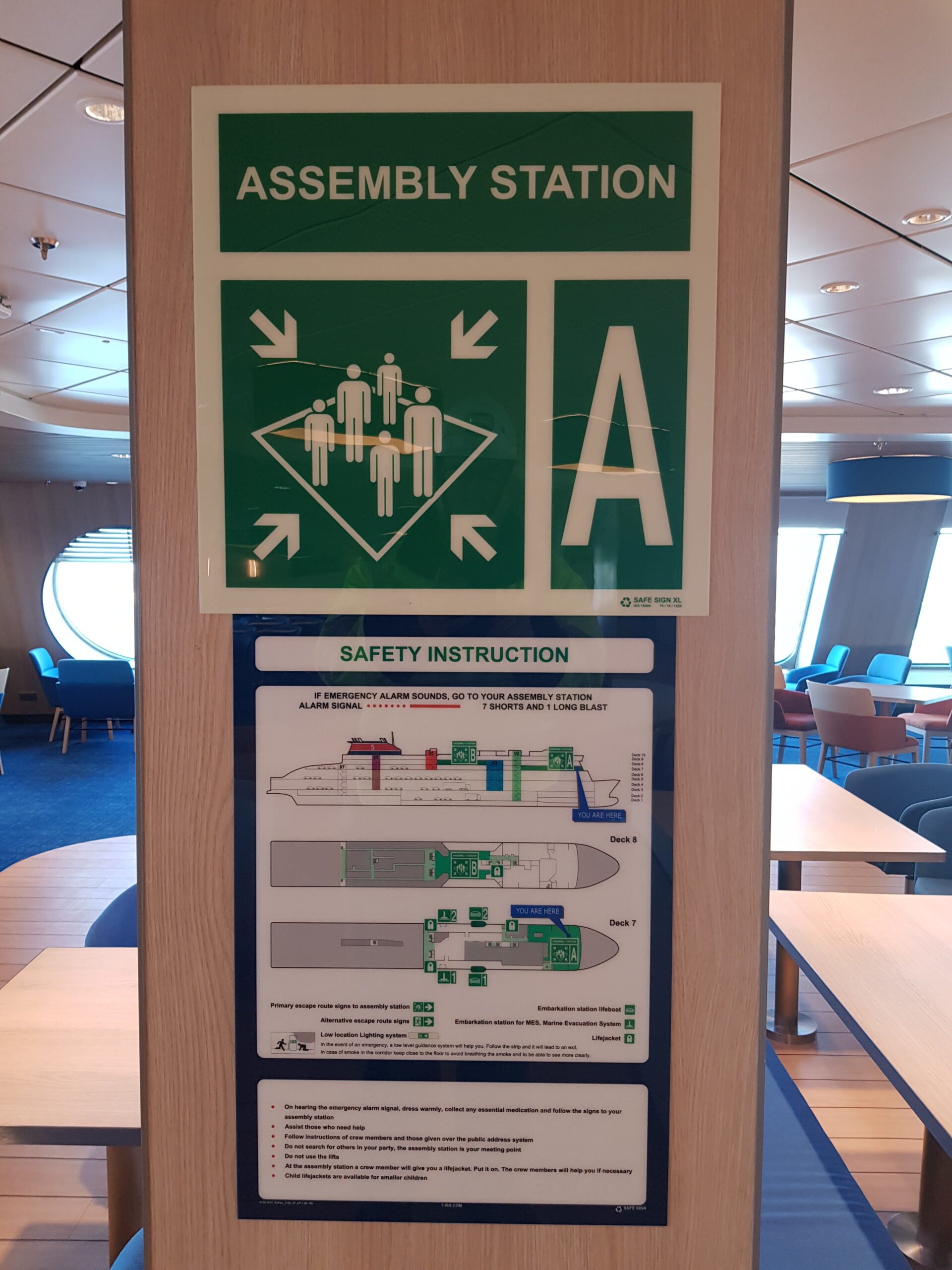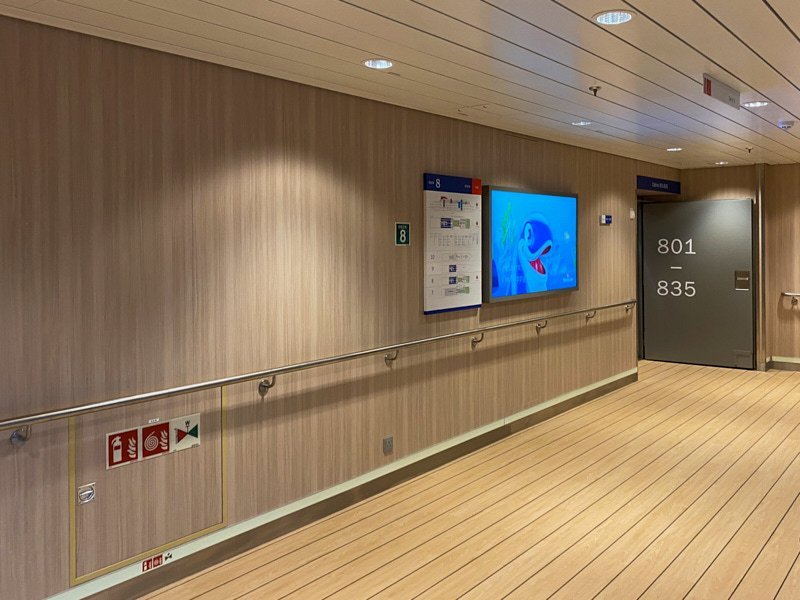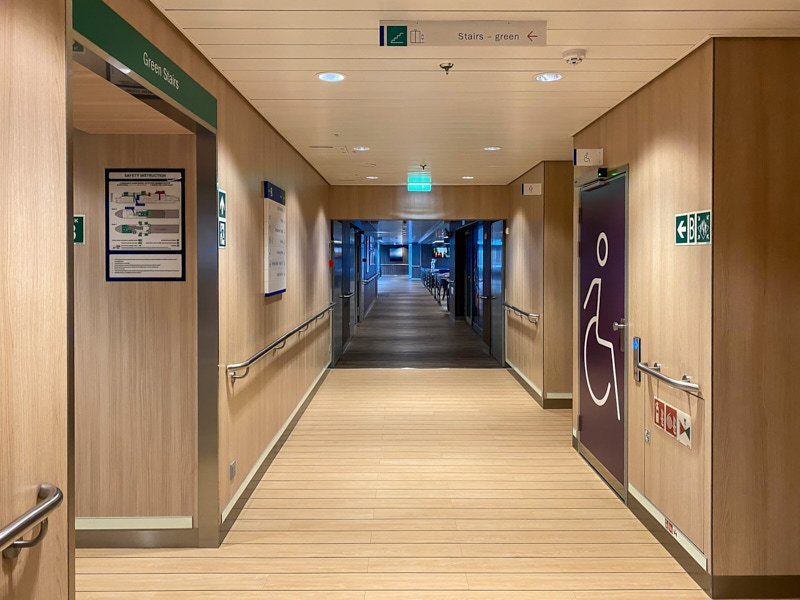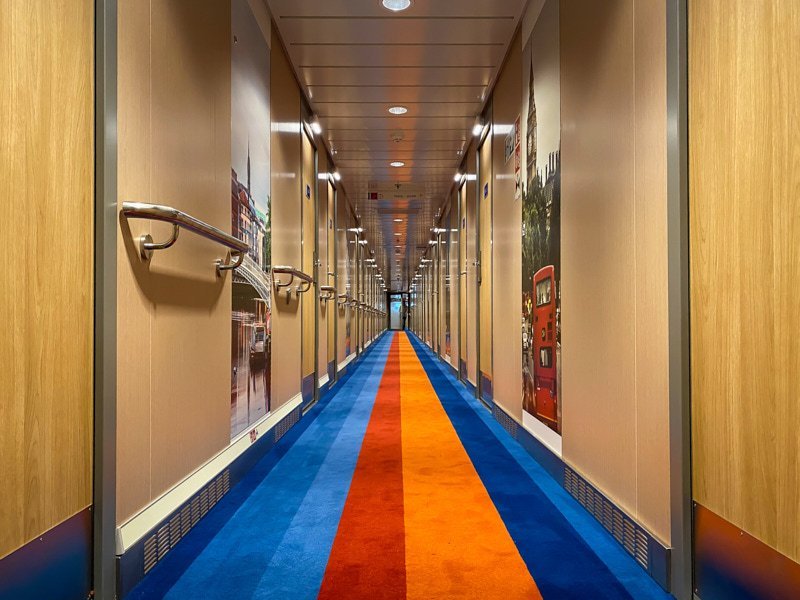The Escape Sign System
A story about implementing an Escape sign system on ships will sound like a technical job to many. A large amount of exit signs, stickers and strips, self-adhesive or attached with screws, but not something that requires a lot of thinking.
We still see it every day on various types of (cruise) ships and ferries: the lack of signage or, on the contrary, a jumble of exit signs and stickers that all scream for attention, sometimes with conflicting messages, where a sense of safety is hard to find.
When the subject is ‘safety signage’ onboard ships, for many that equals ‘Exit Signs’, without any distinction between primary and alternative escape routes as defined in the ship’s mandatory escape plan.
The specialism in the field of escape route signage however, is not to hang (or omit) as many exit signs as possible. Attention should be paid to the connection between the Escape Plan and the signage guiding people to the assembly stations: those are the locations where passengers must be accommodated, where the lifejackets are and where controlled embarkation can be organized systematically if necessary.
A single exit sign on board a ship is meaningless, because as a passenger, where do you have to go?
The answer is simple: the destination should always be the assembly station!
Escape route signage: the system

An effective escape route signage system consists of a coherent whole of:
- Low location lighting, including escape signs
- Signs applied at eye level
- Electrical signs
- Signage indicating how to reach the assembly station(s)
- Instructions for guests and staff (in the cabins and common areas)
When designing this system we always aim to increase the effectiveness of the evacuation process. Cruise ships are complex architectural environments. Are guests and staff aware of the layout of the ship, do they know where the lifeboats are located? For these reasons, an effective escape route signage system is not complete without clear instructions and training; for guests and staff.
In accordance with ISO, as defined in the 24409-2 required by IMO Resolution 1116(30), a safety sign must always consist of a symbol. An escape route sign is always a symbol with an additional arrow. The text ‘assembly station’, or ‘exit’ may be used additionally, in any language or multiple languages.
An arrow without a symbol is not an escape sign. And loose arrows on LLL are completely wrong (except in dead end corridors) because you never know in advance if the primary escape route to the assembly station is passable. If it is blocked, passengers should be able to take an alternative route, which must be clearly marked, without risk of confusion. All this must be clearly explained in the safety instructions.
Escape route signage: the implementation
So we conclude that escape route signage is more than just a collection of exit signs and also more than just doing what is urgently needed to meet the requirements of an inspection or classification society.
The correct implementation and assembly of escape route signage is essential to achieve the above situation. When applying safety signs, low location lighting and instructions we think of the right height, position (is the sign visible) and the right fasteners. A correct mounting is therefore just as essential as the design of the system.



